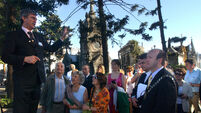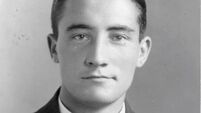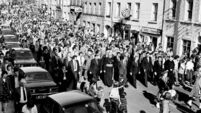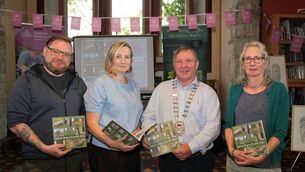The Mayo man who helped to save Irish traditional music
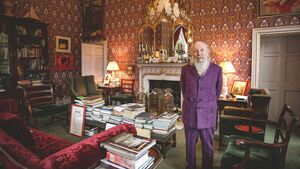
Garech Browne at his home, Luggala, from where he ran Claddagh Records for over half a century.
In the early hours of Monday, December 19, 1966, a Lotus Elan went out of control in the fashionable London suburb of South Kensington.
The driver, Tara Browne, was pronounced dead some hours later. He had celebrated his 21st birthday the previous summer.
He had spent his early years in Castle Mac Garrett, near Claremorris, with his older brother, Garech, and his parents, Lord Oranmore and Browne and Lady Oonagh Guinness.
Tara was immortalised in Lennon and McCartney song, , which included the lyrics:
By that time, Garech Browne, in mid-1966, had been immersed in the setting up of Claddagh Records to preserve and protect traditional Irish music and the spoken word. He founded the label with a young medic, Dr Ivor Browne, and released albums by The Chieftains, Patrick Kavanagh, Seamus Heaney, Seamus Ennis, Dolly McMahon and many more.
Before his death in 2018, Garech recalled early memories of Castle Mac Garrett:
“I can remember dancing to Irish music at around the age of three. It is one of my earliest and most vivid memories.”
Garech Domnagh Browne was born on June 25, 1939. He was christened at St Patrick's Cathedral. The Second World War broke out later that year. In March 1945, Tara Browne was born.
Garech's early years in Mayo were to influence his adult life.
“I grew up in Mayo where there was a strong tradition in Irish music. Traditional music was played in homes and in neighbour’s houses on all sorts of occasions, and no occasion at all.
“There was a man who worked for my father, doing all sorts of jobs. He loved Irish music and I would hear him whistling these tunes and I thought they were magical. I would walk around after him. He was like my own Pied Piper.
“I think he and my father would have differences of opinion about things but they never fell out. On hot summer days, this man would take a ladder and go up onto the roof to repair slates and every now and then you would hear the sound of a hammer and some whistling… and then silence, a long silence. After a while, the hammering and the whistling would resume. I heard my father saying that he went on to the roof for a little nap, where he knew couldn’t be disturbed.”
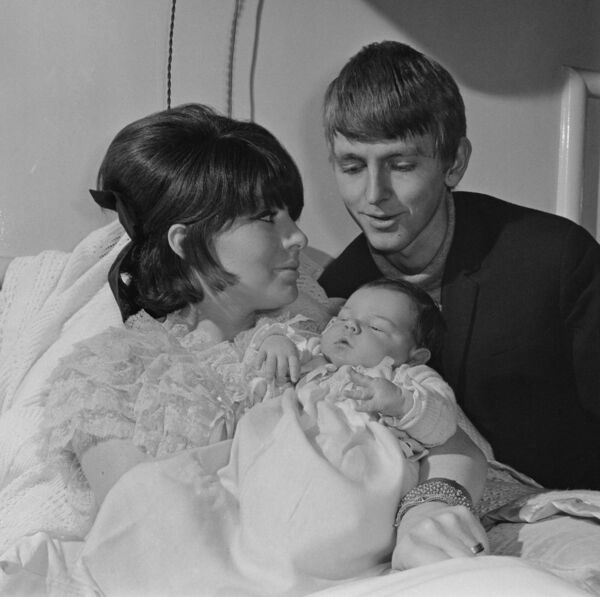
Brother Christy O’Carroll was three years older than Garech and he recalled Christmas parties organised by Dom for local children, at which the host would show short films he had made during the year on a cine camera.
“I can still see Garech as a little boy cycling around on his tricycle, he had long blond hair.
“My father had a lot of respect for Lord Oranmore. He was a very good neighbour and gave a lot of much-needed employment.”
A former employee later recalled: “A butler waited on the table and two footmen brought the food to the tables, the footman would hold the plate. The chauffeur and the butler always ate in the housekeeper’s room. The housekeeper, the head house man and the chauffeur all had their own rooms.”
Ernest and Kate Smyth lived at the lodge on the grounds. He worked on the estate where up to 80 were employed, initially as a labourer and later as a gardener. Later Beattie, their daughter, worked in the main house.
“While Castlemaggerrt had its joyous moments it also had its sad ones” she recalled in 2003.
In 1946, Tessa Kindersley was preparing her pony for the Horse Show in Dublin. She had a serious asthmatic condition and because of an outbreak of diphtheria, her mother sought out a local doctor to inoculate the young girl. She was summoned from the fields to the house where she was given an injection. Within minutes she suffered an adverse reaction, went into a coma and died a number of hours later. She was 14.
“We all cried, we were all devastated…we never got over it," said Beattie. "A big wake was held and her remains were brought out the avenue to the Church of Ireland, Crossboyne. Her pony, Brown Jack, led the funeral procession. Her family stayed overnight in the Church and following a service, her remains were taken to Luggala for burial.”
Decades later there was a knock on Beattie’s front door: “It was none other than Garech and his wife (Princess Purna of India). They didn’t leave until five o’clock in the morning.”
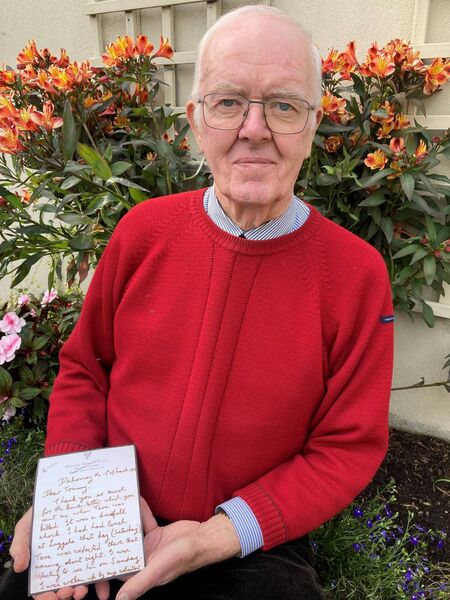
Garech grew up wanting to know more about his "Irishness"
“I was learning French in Paris and I had a Breton teacher who asked me about Ireland. I wasn’t able to answer many of the questions and I think it was then that I decided that I really should know more about my own country."
His earlier years were devoid of any semblance of routine or structure. He received some schooling at Castle Park, Dalkey, Co Dublin and later attended the Swiss boarding school, Institut Le Rosey. The rather rigid regime of boarding school didn’t appeal to Garech:
“I really hadn’t encountered much discipline and I rather disliked it there.”
And so he sent himself a telegram: “Unforeseen circumstances. Come home immediately – your loving mother.”
His life’s journey would be plotted and planned in an erratic sort of fashion. It would be the few constants in his life.
At one stage he collected stamps. “When I got a stamp from a particular country I wanted to learn about that country, where it was, its climate, its people and its culture.
“I loved listening to Ciaran Mac Mathuna's on Radio Eireann. I learned so much from him and his programmes."
Ciaran's wife, the renowned traditional Irish singer, Dolly McMahon, recorded an album with Claddagh Records in the 1960s.
“Ciaran did more in broadcasting terms for Irish music than anybody else. I used to go around the country sometimes with him when he was recording. He was the most patient man I ever met. He would record anyone who wanted to sing or play regardless. That was how he found special people.
“He would set up his microphone and his equipment with his recording engineer in homes and pubs, wherever. And people sang and they played into the early hours of the morning.”
Poet Patrick Kavanagh was recorded for Claddagh shortly before he died in 1967.
“We recorded Paddy because John Montague, another poet, said to me that Claddagh shouldn’t just be making records of traditional music and that we should be recording poets reading their own work. Paddy was ill and I was delighted that our first poetry recording was of his work.
“Paddy was a delight to work with. People used to say to me ‘Paddy can be very difficult.’ I’d reply: 'We all can be difficult.'"
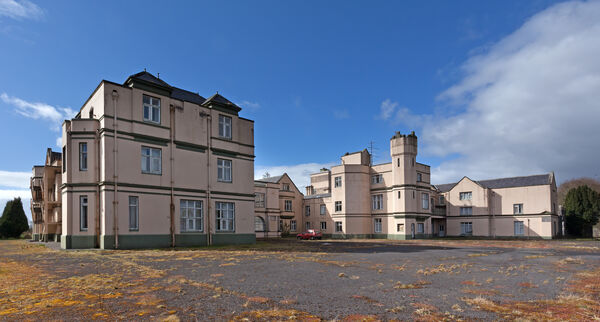
Garech always insisted that Claddagh albums have attractive covers and interesting sleeve notes. He commissioned Eddie Delaney, a renowned sculptor, originally from Claremorris, to design the first albums by The Chieftains.
“I always insisted, if I could, that a writer wrote the sleeve notes, a photographer took the photographs or a painter painted the cover. I felt that the unification of the arts was something that was missing in Ireland.
“I think my interest in Irish music and the spoken word just grew naturally. And thanks to Ivor (Browne) Claddagh wanted to do what wasn’t being done as in the case of Leo Rowsome, the wonderful maker of pipes and teacher of many many pupils including Paddy Moloney and Liam O'Flynn.
“There were so many talented people all over the country singing, playing the fiddle and performing in distinctive styles from place to place.
“Without Leo Rowsome there wouldn’t have been a piper in Ireland ever again because he was the only pipe maker then and the only teacher of the pipes.
“Brendan Behan used to be in Quinn’s Lane in my flat whenever he wanted. Yes, he was always there and he’d join in a song. You’d think he was asleep having passed out. He was fully aware and conscious and he’d just join in a song when he felt like it or he heard somebody playing a song he knew the words of.
"We had a contract with him but we never got round to recording him because he died.”
It is without question that Garech Browne - a very proud Mayo man - who died in 2018 did his country more than some service when he fired up the dying embers of Irish music and the spoken work at a time it faced its greatest threat over several hundred years with the high rollers of pop music coming across the Atlantic and the emergence of pop and beat groups in Liverpool, London and Manchester.
Kiltimagh native James Morrissey has just published a fascinating new book on Garech Browne, entitled Real to Reel.
